PART 2: ALLOGRAFT LIVER, NEEDLE BIOPSY -
COMMENT:
Although significant bile duct loss is not noted, the
changes of chronic duct injury raise the possibility of early chronic rejection.
In some instances, similar duct changes can be associated with chronic hepatitis
C, but they are typically focally distributed in that setting. Correlation with
liver enzymes (including the GGTP) is necessary.
Previous Biopsies on this Patient:
NONE
TPIS Related Resources:
Liver
Allograft Rejection Grading
Liver
Transplant Topics
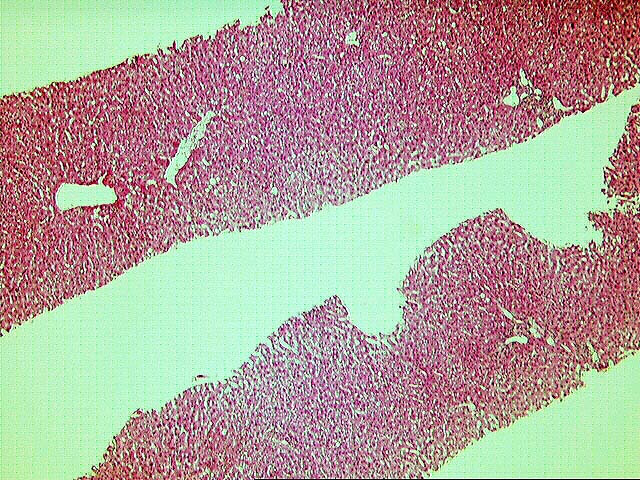
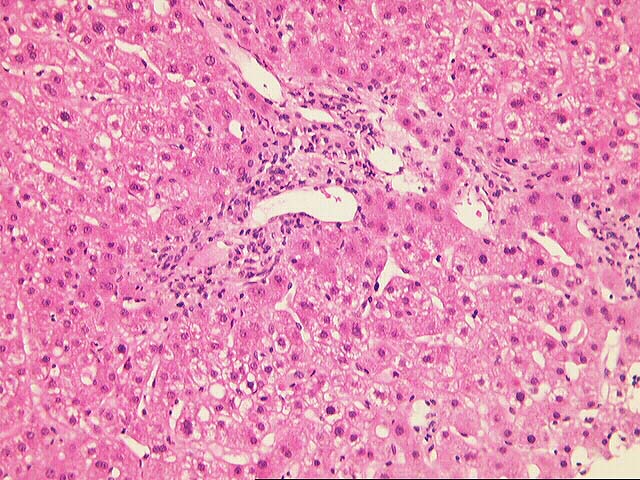
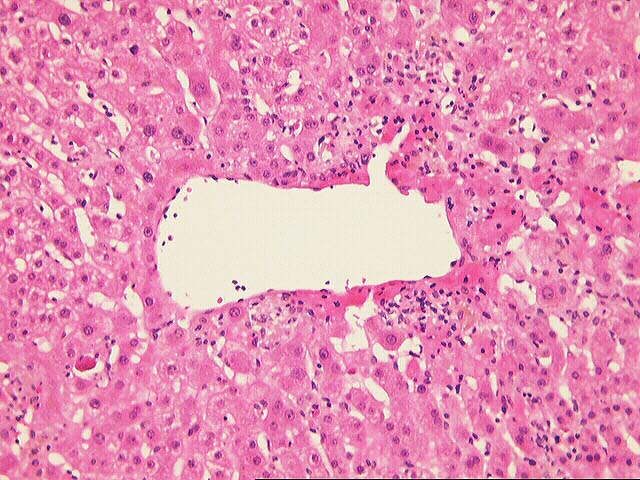
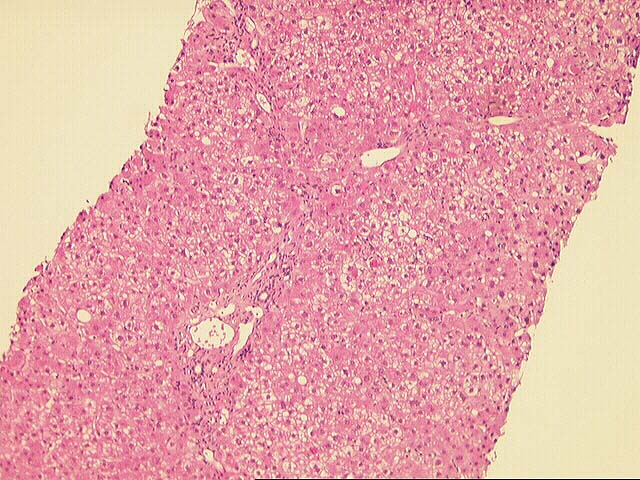
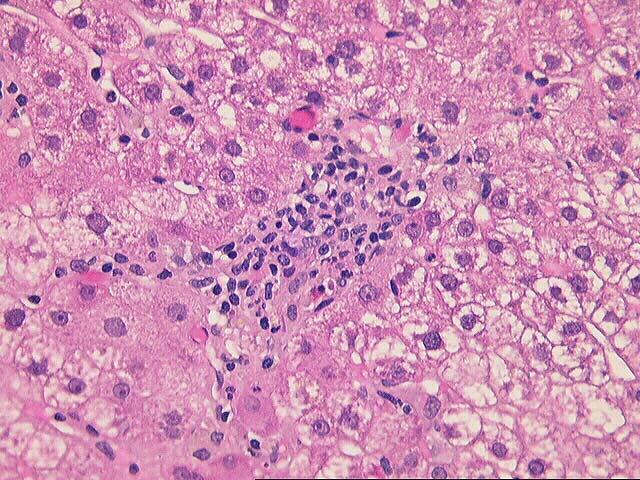
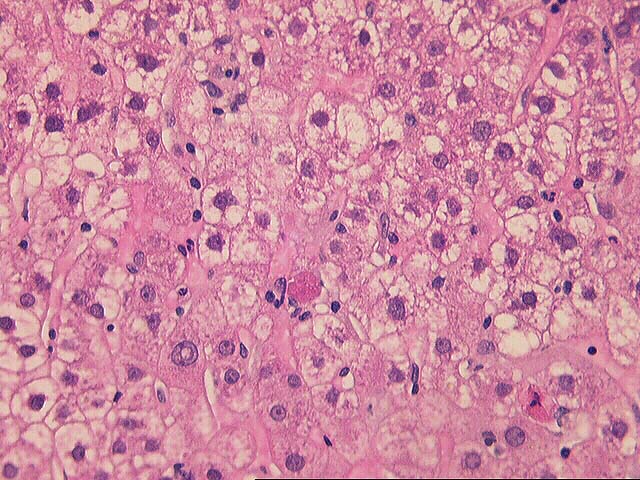
The initial biopsy demonstrates a mild lobular hepatitis characterized by numerous scattered acidophilic bodies together with a lobular inflammatory infiltrate that comprises mononuclear cells, hypertrophy Kupffer cells, and scattered eosinophils. No viral inclusiona are identified. There is minimal macrovesicular steatosis. The portal tracts generally demonstrate mild ductular proliferation and a sparse mononuclear infiltrate. One portal tract displays a more pronounced mononuclear infiltrate associated with bile duct injury. This finding is indicative of acute rejection, but, given the involvement of only one tract, it qualifies for a grade of minimal or indeterminant acute rejection. Overall the changes indicate an active lobular hepatitis, and cytomegalovirus, other extrahepatic infections, and early recurrent hepatitis C should be considered as possibilities. By report, immunostains for CMV were negative.
The second biopsy demonstrates similar lobular features with numerous acidiophilic bodies. The degree of lobular inflammation is less, and this, along with the hepatocyte swelling centered on the periportal region, correlates with the steroid therapy given. No evidence of acute rejection is seen, and no viral inclusions are identified. By report, CMV immunostains are again negative. Again, the changes (in the absence of other infectious agents) suggest the possibility of early recurrent hepatitis C.